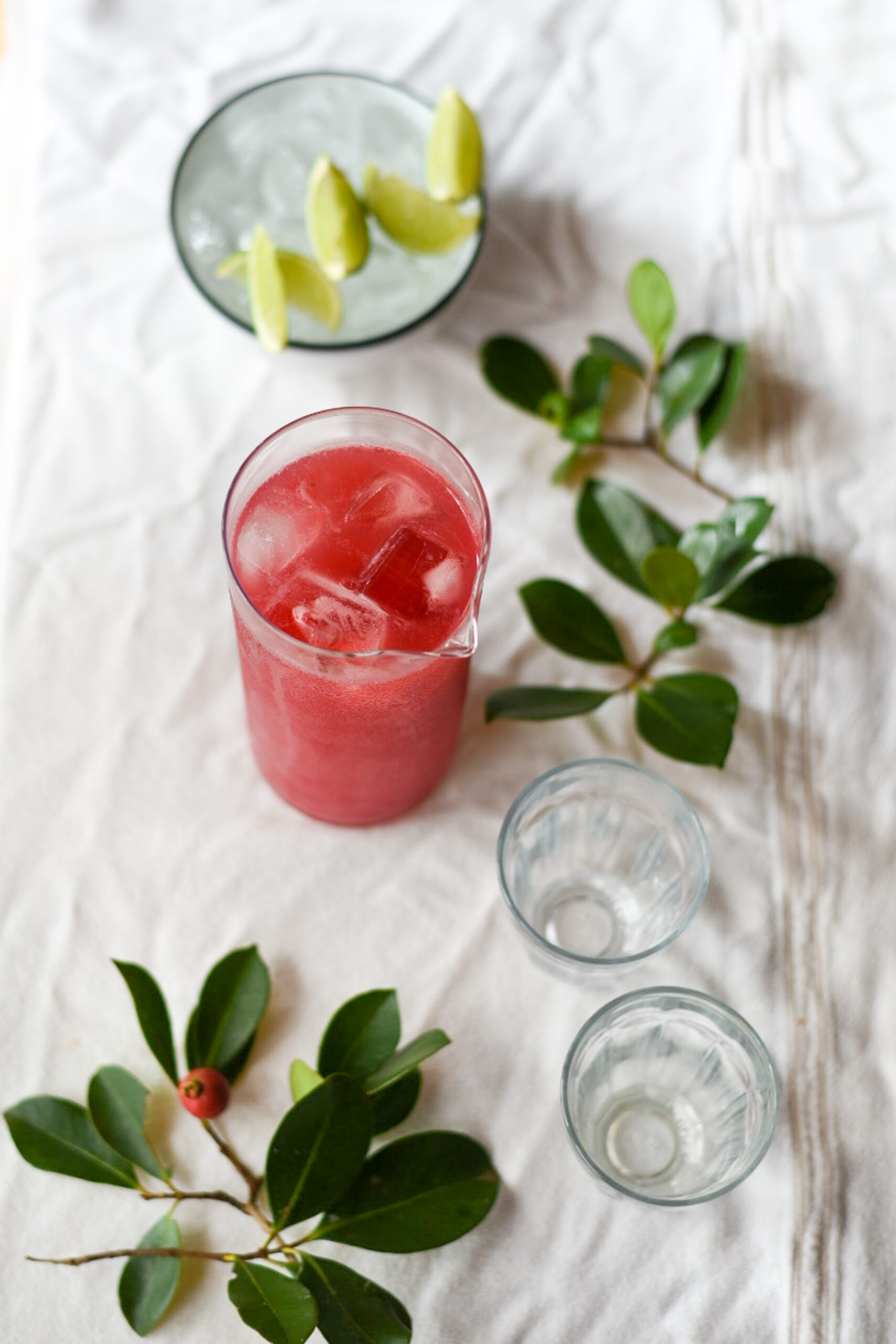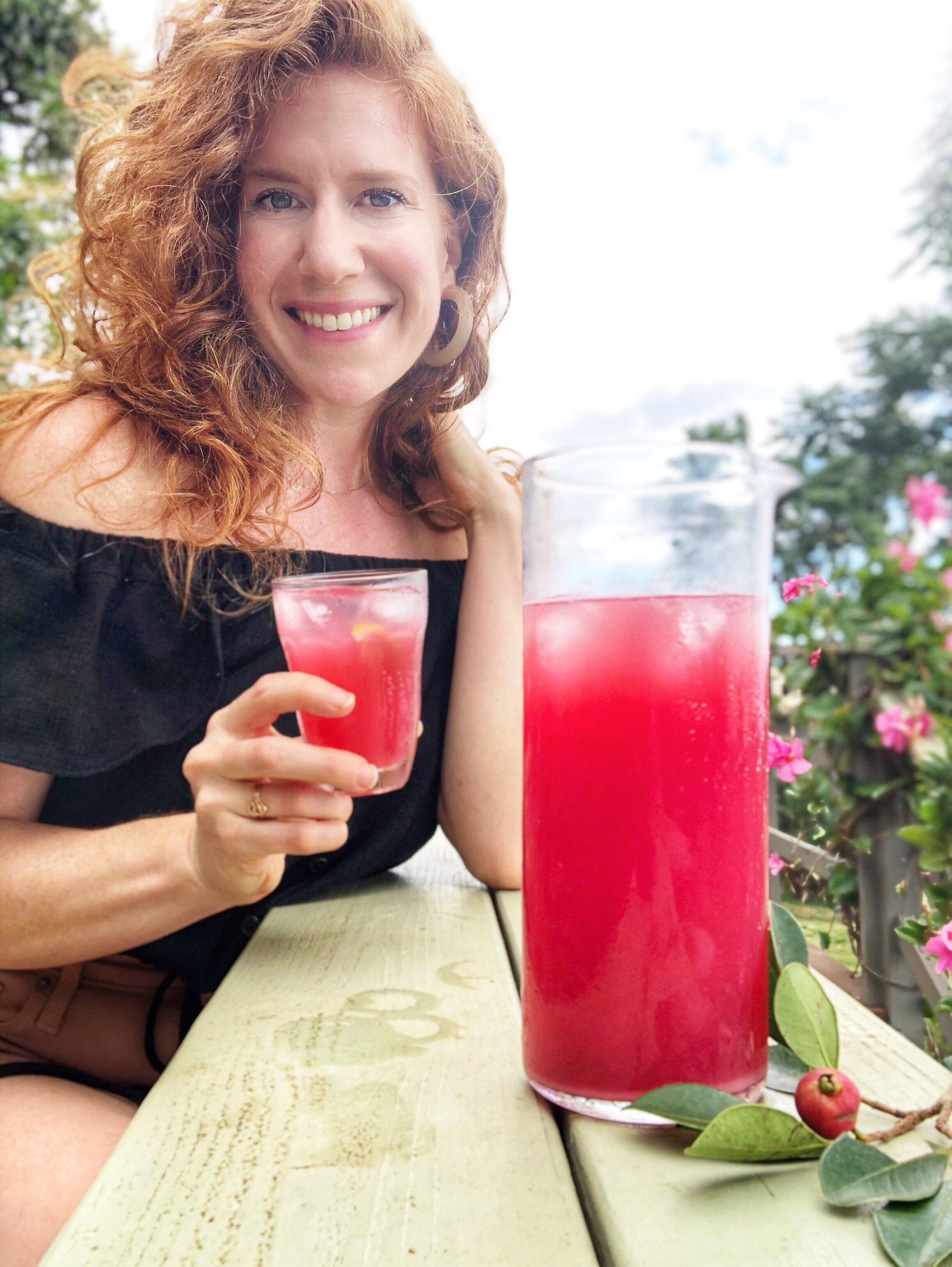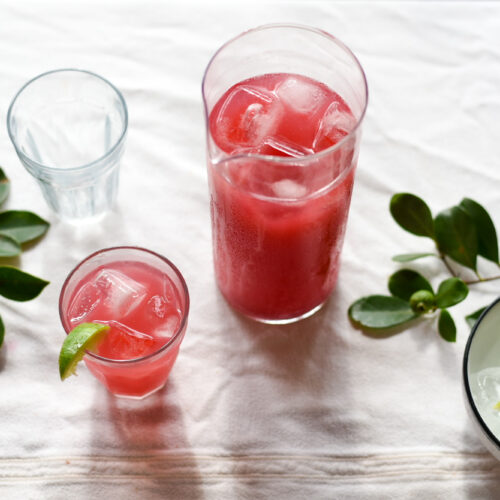
This post is sponsored by Foodland and the Hawaiʻi Department of Agriculture as part of Foodland’s Eat Local Today initiative.
My friend Caiti does something magical every summer: she wild ferments the ripest, juiciest, most delectable fruit into varying stages of probiotic soda or even (gasp) sparkling wine. Faced with an extraordinary bounty of waiawī, or strawberry guava, here on Maui, I decided it was time to explore my own horizons of wild fermentation. In partnership with Foodland—my favorite local grocery store—and the Hawaiʻi Department of Agriculture, I’m excited to share the delicious results with you.
Here’s the most thrilling part of this whole endeavor: Making your own wild fermented soda only requires three ingredients, and one of them is water. Take almost any ripe summer fruit with a high enough sugar content and a bloom on its skin (stone fruits like peaches, plums, and nectarines work great, as do sweeter berries like blueberries), mash it all up, mix it with a tiny bit of raw, local honey, and stir it with equal amounts water. I used my favorite honey from my hometown, made by Maui Bees, and always in stock at my local Foodland market.
Let it sit for two to three days. Fermentation magic happens.

I began my ferment using strawberry guavas that were sweet and already so ripe that they were close to fermenting. Here in Hawaiʻi, waiawī is one of the most invasive species in the state. Native to Brazil, the fruit’s Latin name is Psidium cattleyanum, for English horticulturist William Cattley. It was introduced to Hawaiʻi in 1825 with the hopes of it becoming a commercially viable crop, but was never cultivated for mass sale because the fruit spoils extremely quickly once picked. The invasive trees grow so densely that their foliage often crowds out other plants, including native growth.
Lucky for us, waiawī is incredibly delicious.
So how exactly does this wild fermentation wizardry occur? I thought you’d never ask. Many thanks to Caiti for guiding me through this inaugural fermentation process.
First: Wild yeast lives on the skin of many fruits—it’s in that opaque, matte layer on their skin, also known as a bloom.
Second: Once you mash up your fruit (skin on) and add it to water, that same wild yeast begins feeding off of the naturally occurring sugars inside of the fruit (and any honey you add).
Third: As the yeast eats the fruit sugars, it releases gases, which cause carbonation.
Finally: The longer you leave the blend to ferment, the more the yeast will eat up the fruit sugars. Eventually, this will become alcohol, or even vinegar. But we’re going to stop fermentation long before that happens.

The result? A tangy, sweet, mellow probiotic soda that, yes, may have a very slight alcohol content—similar to kombucha. But better, in my humble opinion. Why better? No caffeine (I get the jitters easily), and no added sugars. Plus, you made it yourself using the wild yeast from local fruit (hopefully) nearby.
Doesn’t get much more satisfying than that.
If you decide to embark on your own wild fermentation adventure, tag me on Instagram @lilydiamond. And don’t miss the step-by-step video I posted there as well. I can’t wait to see how it all bubbles up for you.


WILD FERMENTED STRAWBERRY GUAVA SODA.
Ingredients
- 1 part strawberry guava pulp, including skin and seeds or any fruit and its skin (remove pits for stone fruit)
- 3-4 parts purified water
- 1-2 tablespoons raw, local honey optional depending on fruit's sweetness, but will increase speed of fermentation
Instructions
- Wash your fruit just to remove any dust and dirt.
- In a large bowl, use clean hands to mash up the fruit into a soupy pulp.
- Transfer the fruit pulp into a large, clean, thick-walled glass jar or sturdy plastic jar, large enough to hold the fruit and water and still have at least 2-inches of room at the top.It's very important that you use a thick enough glass jar and leave room at the top, otherwise fermentation can cause the glass to shatter.
- If using honey, dissolve the honey into a bit of water, then add it to the pulp along with the rest of the water, 3-4 times the amount of fruit pulp. Cover with a lid and shake thoroughly to distribute.
- Remove the lid and cover the top of the jar with a few layers of folded cheesecloth and seal with a rubber band. Let the jar sit on the counter, away from light and heat, for 12-24 hours.
- Once 12-24 hours have passed, open up the jar to release any built up gases from fermentation, and give your ferment a stir. You will likely already see bubbles!
- Taste to determine how much longer you want to ferment. The longer you ferment, the more tangy and funky flavored it will become (but overall, it won't likely ferment past 1-2% alcohol content). Cover with cheesecloth, and continue this process for up to 2 or 3 days, stirring every 12 hours.
- Once you're ready to slow down fermentation, strain the pulp out of the liquid, and pour the liquid into a glass jar. Seal with a screw-on lid and let sit on the counter, away from light and heat, for another 12-24 hours, or as long as you like.
- When you're ready to stop fermentation, move the bottle to the fridge. Resist the urge to shake! Slowly open the jar when you're ready to drink, and serve over ice. Add additional honey, lime, vanilla, cardamom, or any other flavors you like to compliment the fruit you've used.



